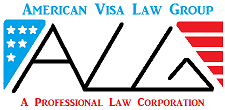If you have at least $900,000 to invest in a business in the United States, you and your dependents (spouse and children under 21) may potentially obtain a green card to live in the US under the EB-5 regional center investor visa program. If you are unable to make such an investment, you may obtain an E-2 visa in the alternative if you are a citizen of one of the approximately 90 qualifying treaty trader countries. The E-2 visa allows you and your dependents to live in the US, however, you are required to renew your visa on an ongoing basis. We have been able to obtain E-2 visas for investments in businesses with startup costs as little as $15,000.
If you are looking for assistance in your EB-5 or E-2 visa application, our firm can help you. We’ve written separate articles about EB-5 and E-2, which you may read by clicking on the text. On this page you will find a checklist of documents for your convenience. The checklist can not be considered a complete list of documents, but more of a starting point. As you work on the application with us, we would provide you with ongoing feedback until a viable application is ready to be filed. If you would like to book a consultation to discuss your eligibility and how you may proceed in either an EB-5 regional center investment visa application, or an E-2 visa application, please call us at 510-500-1155 or email us at info@usavisalaw.com.
EB5 Regional Center Investor Visa Guide
Checklist of documents for EB-5
■Form I-526.
■ Application fee (currently $1,500; checks or money orders are accepted, but not cash).
■ Evidence that you have invested or are in the process of making an investment, such as:
■■ Accountant’s financial statements, including profit and loss statements and balance sheets of the company for past two years.
■■ Bank wire transfer memos showing amount of money sent to the U.S. from abroad.
■■ Letters from banks or bank statements indicating average account balance of the business.
■■ Evidence of deposits of funds in the business’s bank account.
■■ Comprehensive business plan with cashflow projections for next three years.
■■ Contracts for purchase and bills of sale for purchase of capital goods and
inventory.
■■ Lease agreements for business premises, contracts to purchase, deeds for business real estate, or construction contracts and blueprints for building the business premises.
■ Evidence that investment funds were obtained lawfully, including:
■■ Foreign business registration records, if your funds come from a business you own.
■■ Securities statements, if the funds came from trading, bonds, or stocks.
■■ Tax returns for you and your business filed anywhere in the world within the past five years.
■■ Financial statement for your business.
■■ Personal and business bank statements for previous 12 months.
■■ Letters from members of the business community confirming your occupation and your successes.
■ Certified copies of all pending civil or criminal actions and proceedings, or any private civil actions involving money judgments against you within the past 15 years.
■ Evidence that you’ve invested in a lawful, for-profit, active business entity in the U.S., or else invested enough in an existing business to make its net worth or number ofemployees go up by at least 40%, such as:
■■ Articles of incorporation, partnership agreement, or other legal charter or business license of the company, together with a notarized affidavit from an official of the company certifying who owns the business and in what percentages.
■■ Copies of all outstanding stock certificates, if the business is a corporation.
■■ Evidence of payment for equity (match wire transfer value to stock ledger share value).
■■ Notarized affidavit from the secretary of the corporation, or, if the business is not a corporation, from the official record keeper of the business, stating the names of each owner and percentages of the
company owned.
■■ Credit agreements with suppliers.
■■ Evidence that you transferred capital resulting in a 40% or higher gain in number of employees or net worth.
■■ Payroll records of the company for the past two years, if available.
■ If applicable, evidence certifying that the business is located in a rural or high unemployment area, such as a letter from your state government.
E-2 Treaty Investor Visa Guide
Checklist of documents for E-2 Visas
■ Form I-129, with E-1/E-2 Classification
Supplement.
■ Filing fee: $325.
■ If your family members are with you and
need a change of status, Form I-539 with
accompanying fee (currently $290) and
copies of your family members’ I-94s or
other proof of lawful immigration status
and of their relationship to you (such as
marriage and birth certificates). One Form
I-539 and fee will cover your spouse and all
your children.
■ If either you or your spouse have ever
been married before, copies of divorce and
death certificates showing termination of
all previous marriages.
■ A copy of your I-94 or other proof of your
current lawful, unexpired immigration
status (except that Canadians who are just
visiting are not expected to have I-94s).
■ Proof of the nationality of the qualifying
business owners.
■ Proof that you are the principal investor,
or an executive, manager, or key employee.
■ Proof that the investment is or will be
substantial.
■ Proof that the business will produce
greater-than-marginal profits.
■ Proof of the existence of a bona fide, active
business.
■ Documents establishing your intent to
leave the U.S. when your status expires,
such as deeds verifying ownership of a
house or other real property, written
statements from you explaining that close
relatives are staying behind, or letters from
a company showing that you have a job
waiting when you return from the United
States.
■ Cover letter (optional).
